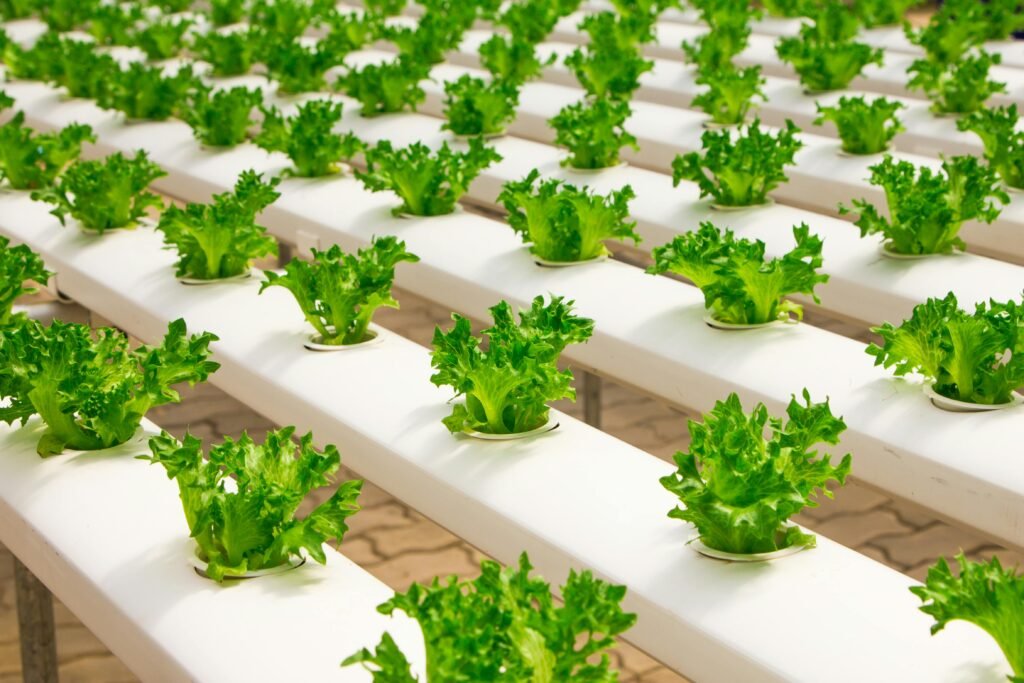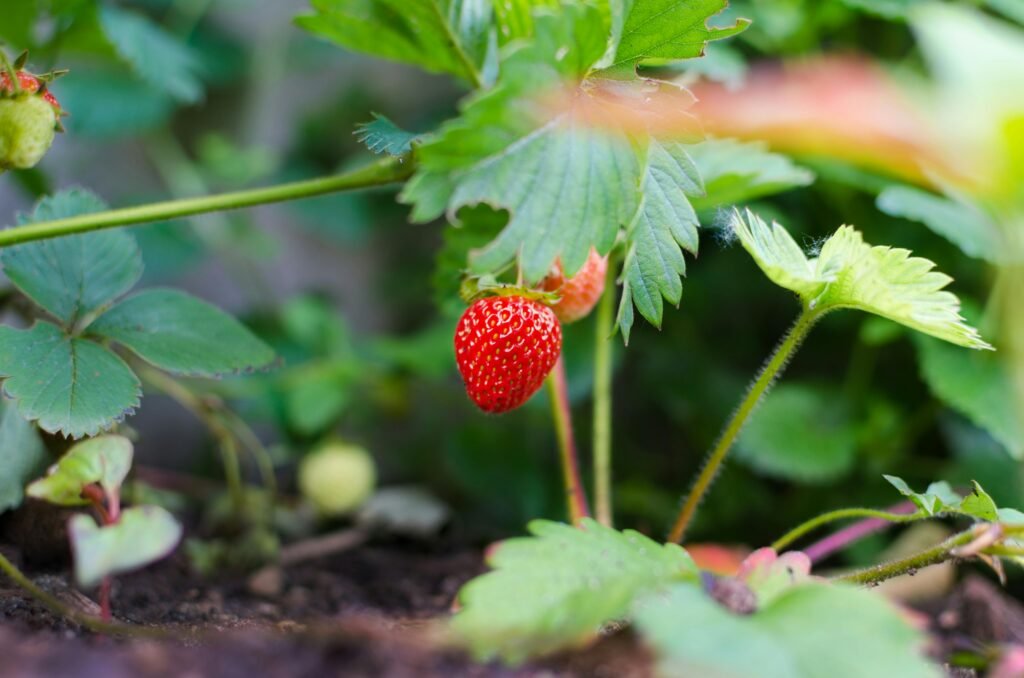Introduction to Climate Change and Farming
Climate change is the significant changes in global temperatures and weather patterns with the passage of time. Although climate change is a natural phenomenon, there has been increased human activities that have accelerated these changes. This is leading to more severe consequences. Among the sectors affected by climate change is agriculture. Indeed, farmers rely on stable weather patterns to produce crops, and the unstable change in weather conditions presents significant risks. In this blog, you are going to read about new farming practices that can fight climate change. First, let us discuss the issues we face in the agricultural sector because of climate change.
Unpredictable Weather Patterns
The unpredictability of weather patterns is one of the main challenges with respect to changed climate conditions. At the moment, with climatic changes, there are no long-term patterns that can be predicted. Erratic rainfalls, unseasonal frosts, and sudden changes in temperatures are all disturbing traditional farming. In such a case, crop production will be impacted, and huge financial losses are also expected.
Drought
Another major problem is drought. Long-term drought can destroy crops and reduce water available for irrigation. When there is not sufficient water, crops cannot grow properly. Thus, it affects the food production as well as the livelihood of farmers. On the other hand, when there is excessive rainfall and flooding, it can also destroy crops, erode topsoil, and disrupt planting schedules. These extreme weather conditions have increased in frequency as a result of climate change.
Changing Seasons
Changing growing seasons are another concern. The increase in temperature and seasonal change will also see the crops that were performing so well in certain places grow too hot to survive there. Changes may make it challenging to set an appropriate time to plant and harvest. Since crops depend on seasonal changes, there’s no way traditional crops would grow as they do. These need to be replaced with new crops and farming methods so that crop production is still possible.
Regarding this aspect, there is a crucial need for new farming techniques so as to combat the climate change effects. This using of new methods and new technology by farmers increases their resilience and production and safety of their livelihoods. This blog post will explore various innovative techniques that can help farmers adapt to and reduce the effects of climate change. Thus, ensuring a sustainable and productive agricultural future.
What Are Innovative Farming Techniques?
Modern agriculture, or innovative farming techniques, are modern ways and methods of improving the efficiency and sustainability of agriculture with low environmental impacts. They are highly advanced techniques incorporating technology, science, and ecological principles to help reduce impacts of adverse climatic changes and mitigate several other challenges faced by traditional farming systems. Adoption of innovative farming techniques can increase productivity and conserve resources and increase the resilience against extreme weather events for the farmers.
Traditional farming normally involves using much resources as well as using high amounts of heavy chemicals for crops to grow. This new method of farming is known to use much fewer energy levels but use plenty of available resources. Such methods of farming include precision agriculture, agroforestry, organic farming, and permaculture. All these techniques come with their benefits, but they all share a common goal. They increase efficiency, reduce waste, and enhance biodiversity.
For example, precision agriculture uses data and technology to tailor farming practices to the needs of crops and soil conditions. It entails the application of tools like GPS mapping, sensors, and drones in applying water, fertilizers, and pesticides, thus lowering input use and environmental impact. Agroforestry promotes the coexistence of trees and shrubs together with crops by improving soil health, sequestering carbon, and providing additional income sources for farmers.
Combining these newer technologies provide more sustainability in the farming systems by conserving natural resources such as water and soils besides reducing emissions of greenhouse gases and enhancing the health of the ecosystems. As a result, farmers become more resilient to climatic shifts, such as droughts and floods, which are becoming more common due to climate change.
We can build a sustainable future for our agriculture by implementing the innovative farming techniques. This way we can make sure that food production can meet the growing global demand while preserving the planet for future generations. Farmers, through these techniques, improve both their livelihoods and contribute toward combating climate change while supporting the overall wellbeing of their community.
Innovative Farming Techniques-Precision Agriculture
Precision agriculture, known as precision farming, involves the application of advanced technologies directly at the field level for better crop management optimization. Tools used include the Global Positioning System, Internet of Things devices, and drones to allow for real-time monitoring and management of agricultural activity.
GPS Technology
With the help of GPS, the farmer can map his land precisely. He can plant, fertilize, and irrigate accurately. He can also navigate and use machinery easily across vast farmlands without overlap and gap. It, therefore, makes full use of seeds and other resources.
Internet of Things (IOT)
The Internet of Things (IoT) enables precision agriculture by connecting various devices and sensors spread across the field. These IoT devices collect data regarding soil moisture, temperature, crop health, as well as weather conditions. This information gives farmers valuable insights in making decisions. Real time data minimizes waste with precise interventions, maximizing the resource utilization.
Drones
A drone with a camera and sensor can provide aerial surveillance. Therefore, crop conditions are analyzed in detail. It is possible to obtain images of high resolution while creating maps on areas that need attention using these unmanned aerial vehicles. Drones also help in tasks like spraying pesticides and fertilizers, as they ensure their application with precision and minimize negative impact on the environment.
Benefits
There are a lot of benefits precision agriculture. With efficient resource management and the right intervention, crop yields may be increased. It reduces overuse of water, fertilizers, and pesticides, which makes the environment sustainable and environmental conservation. It also brings down labor costs drastically and increases profitability by this technology-based approach.
At last, we can say that precision agriculture enables farmers with available data and new technology on which they can make an informed decision. With integration of this technology, people are able to boost productivity while fighting the battle against climate changes through sustainable farming techniques.

Innovative Farming Techniques-Hydroponics
Hydroponics is a modern agricultural technology where plants are grown without using traditional soil. Plants grow in nutrient-rich solution water, thereby creating a very controlled environment. It proves especially useful in urban areas or regions with poor quality land since it reduces the need for arable land.
Benefits
- Hydroponics helps plants grow faster. Instead of putting them into soil, the roots of the plants sit in a nutrient solution. This makes it easier for the roots to get their nutrients and the plants grow quicker. This leads to quicker growth cycles and usually ends with higher yields compared to soil-based agriculture
- Also, hydroponic systems take up less space and may, therefore, be an ideal solution for urban farming. The more vertical space that is made available to farmers the more crops they cultivate in smaller spaces as they stack layers of plants. Secondly, much less pesticide and herbicide are used within the context of hydroponics than compared to traditional cultivation methods. That way, an agriculture business becomes more environmental-friendly.
Common Crops Grown
The common crops which can be grown hydroponically include leafy greens like lettuce, spinach, as well as herbs such as basil, mint, and cilantro. Tomatoes, cucumbers, and strawberries also live in hydroponic systems. Such crops are best suited for hydroponic farming because they have relatively small root systems as well as high market demand.
Challenges
Despite numerous benefits of hydroponics, challenges also exist. In this system, the initial setup costs for hydroponics can be quite high because specialized equipment, such as grow lights, pumps, and nutrient solutions, is used. Another aspect is that proper nutrition and pH balance within the water can be quite tricky and needs to be checked and adjusted frequently. Energy consumption, particularly in the form of artificial lighting, also poses an issue, so renewable sources may open up areas for further research and development.
Overall, hydroponics is a promising and efficient method of farming well-suited to address the challenges that climate change and urbanization have caused.
Innovative Farming Techniques-Vertical Farming
The modern technique of farming is vertical farming whereby crops are grown stacked into layers and often inside controlled, indoor environments. This method does away with vast areas of land that traditional farming relies upon. It optimizes space in vertical directions so a higher density of crops is cultivated in an area that may only have accommodated a few if grown horizontally.
Year Around Crop Growth
One of the greatest benefits is that the crops can be produced all year round. Since such farms are usually placed indoors in controlled conditions, temperature, humidity, and light can be set precisely. This means the output is stable and uniform irrespective of weather conditions. Furthermore, vertical farming utilizes advanced hydroponic or aeroponic systems in which all these nutrients and water are transferred directly to the roots of the plants. Thus, we use the resources more efficiently in this. Hence, vertical farming often requires much less water than traditional farming techniques.
Reduced Need for Pesticides
Another important benefit is that there is less need for pesticides. The controlled indoor environments greatly reduce exposure to pests and diseases. This therefore allows the growth of healthier plants with less chemical interference. This in turn builds safer and more sustainable produce as well as decreases the ecological impact of pesticide use.
Success Story
Vertical farming has been successfully adopted in various places, especially within urban sites where the availability of land is less. For example, in Singapore, companies like Sky Greens have developed vertical farming systems to grow leafy greens in densely populated urban zones.
Vertical farming is capable of being a sustainable agriculture practice that will solve the challenges presented by climate change and urbanization. It is a good way of growing food without using much land or resources. This is essential because the world needs more food, but we also have to protect the environment.
Innovative Farming Techniques-Agroforestry
Agroforestry is a type of farming where trees and shrubs are grown along with crops. This practice combines agriculture and forestry. In short, it can be said that food and trees are grown together. Thus, it helps to create a land-use system which is more sustainable and productive. Agroforestry systems enhance biodiversity, improve soil health, sequester carbon, and provide numerous ecological and economic benefits.
Biodiversity
One of the main advantages of agroforestry is its positive impact on biodiversity. The existence of trees and other shrubs will offer habitats to the numerous species of wildlife, leading to a balanced ecosystem. The increased biodiversity will mean stronger control over pests and diseases as the balance of natural predators controlling harmful populations is achieved. Again, the structure of different plants supports pollinators, crucial for the reproduction of many crops.
Soil Health
Better soil quality is yet another major benefit in agroforestry. Interconnected tree and shrub roots improve better structure for the soil, erosion decreased, and a more substantial amount of nutrient cycling. These plants aid the soil in stabilization hence preserve precious topsoil, together with long-term fertility, to the land. On the other hand, the decaying roots as well as dead plant materials fallen would provide valuable nutrients that may enhance the crops growing into better conditions.
Carbon Sequestration
An important role of agroforestry in fighting the effects of climate change is carbon sequestration. Trees and shrubs absorb atmospheric carbon dioxide to store within their biomass and reduce the amounts of greenhouse gases. The natural process of carbon capture by plants balances the emissions caused by agricultural activities, and therefore it helps in the fight against global warming.
Additional Source of Income
Agroforestry provides additional sources of income for farmers besides the ecological benefits. The trees and shrubs may produce fruits, nuts, timber, and other marketable products, diversifying the revenue streams of the farmers and enhancing their financial status. This diversification is particularly advantageous as we are seeing fluctuating crop prices and changing climate conditions.
Success Stories
Successful agroforestry projects can be found all around the world. In Kenya, for example, general acceptance of agroforestry as a means of livelihood has brought out improved food security and an economically stable smallholder farmers’ system. Similar results from projects are found in South America and Southeast Asia, and therefore, agroforestry could be a global tool for fighting climate change and developing sustainable agriculture.

Future of Farming: Technological Innovations
We are seeing that climate change continues is causing significant challenges to agricultural sector. Thus, the future of farming will heavily depend on technological innovations. Such high-tech innovations that involve AI-powered analytics, robotics, and biotechnology will transform the farming sector. These are not just future ideas, but very important tools meant to increase productivity and sustainability. They are therefore important in our fight against climate change.
Analytics Powered by AI
AI-powered analytics is a powerful tool in this technological revolution. Predictions on weather conditions, healthiness of soil, and diseases a crop will undergo can be provided to farmers using machine learning algorithms. These data will ensure that farming decisions with no waste are made, and this will eventually help them in proper resource use. For example, AI can recognize earlier that there’s a pest on plants, so we can stop them from ruining the whole crop.
Robotics
Robotics is another innovation on a grand scale transforming the agriculture sector. Advanced agricultural robots are capable of performing a range of tasks such as sowing, weeding, and harvesting with quite remarkable efficiency. This reduces manual workforce and ensures that the management of operations can go on quite smoothly even with very large-sized farms. Additionally, automated systems can work every day and significantly improve productivity, help reduce timespan between planting and harvesting cycles.
Biotechnology
Biotechnology is also another key factor in the future of farming. It is mainly being done through genetically modified organisms (GMOs) and gene editing techniques like CRISPR. Through these technologies, we would be able to produce crop varieties that are more resistant to extreme weather conditions, pests, and diseases. Hence, more yields are produced, and food production is stable with climate change challenges.
In the near future, these technological innovations would revolutionize the farming sector. Future farms may come out to be rather highly automated, data-driven, and less dependent on traditional farming practices. These changes promise to meet the continuously growing food demand of the world while building a more sustainable and resilient agricultural sector.
Conclusion: Embracing Change for Sustainable Farming
Adopting innovative techniques in farming has been a huge benefit but necessary as well because it helps to address the changes that come with climate change. Techniques such as precision farming and vertical farming help reduce negative impacts to the environment while helping to produce food sustainably. All through this blog post, we showed a number of the innovative practices such as precision agriculture and vertical farming among others. All help solve the different problems brought about by climate change. All these techniques help lower emissions, increase resource utilization, and ensure a higher crop yield.
Sustainable farming is absolutely necessary. It can save our planet and make sure we all have food for the next generations. To achieve this, it needs the collaborative efforts of farmers, governments, scientists, and consumers. Everyone should know how significant sustainable farming is and they all must promote it.
Everybody should contribute to making farming sustainable. This is from the farmers to the government people, scientists, and even you and me! Therefore, we motivate readers to learn more about these innovative techniques and actively participate in promoting sustainable agriculture within their communities. By speaking out for the kind of practices that could assist in fighting climate change, everybody contributes toward a healthier planet and a more resilient food system. Together, we can bring about change and help build a sustainable future for farming.
Do share your thoughts by commenting below.






